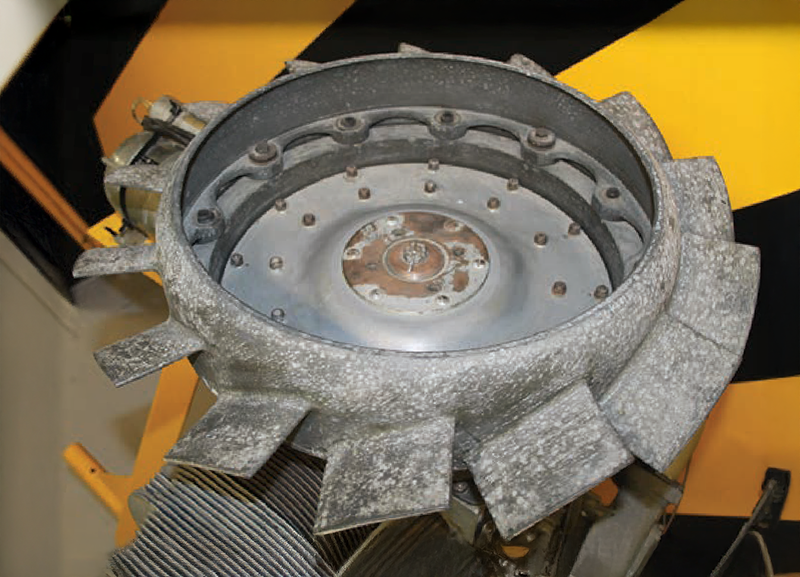
Museum Exhibit: Franklin O-405-09
Submitted by:
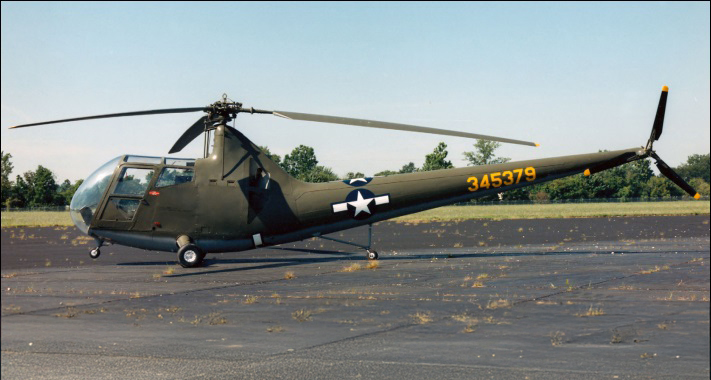
VERTICALLY CHALLENGED
The Editor investigates an interesting air-cooled aero engine, and comes away with just as many questions as answers…
An impromptu visit to the Army Flying Museum at Middle Wallop, while passing on a return visit to Salisbury revealed an interesting array of exhibits - from armoured cars and helicopters to Horsa gliders and man-lifting kites - along with the usual wonderment at the challenging logistics of physically installing them all into such fairly limited spaces.
Exploring further and turning a corner at the far end of the building revealed a display that would inevitably attract the instant attention of this long-time enthusiast of air-cooled Volkswagen and Porsche engines.
Displayed vertically in a metal framework in front of a dramatic yellow and black striped backdrop, bearing the heading 'Sikorsky Hoverfly along with a cartoon-syle image was an impressive looking air-cooled horizontally-opposed thin kep anatory information on display, further investigation was clearly necessary but close inspection of the engine revealed very little in the way of identification marks other than the word 'FRANKLIN' and the accompanying numbers 13246B and 12436 cast in relief on the crankcase.
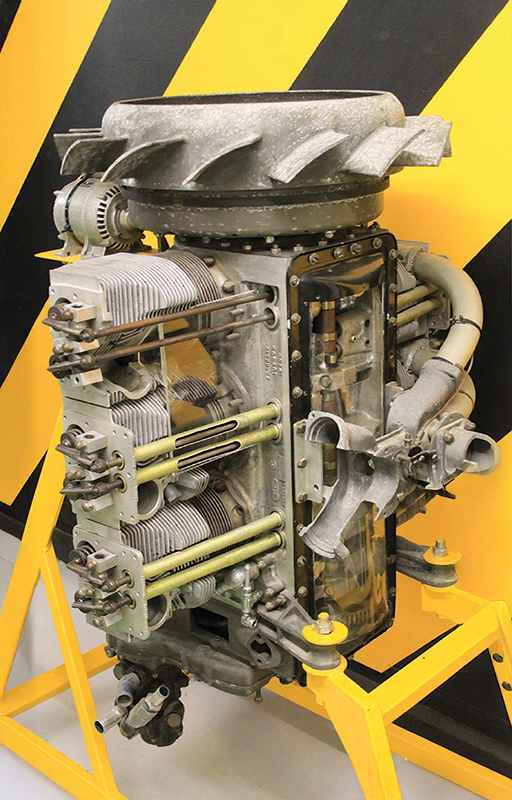
The basic layout was certainly familiar from air-cooled engines of my previous acquaintance, with a longitudinally-split crankcase and individual finned cylinder barrels topped with individual finned cylinder heads, with the pushed volved within rates from a single camshaft.
The camshaft is mounted longitudinally in alignment with the crankshaft and clearly visible through a perspex ‘window’ that had been installed in the remains of a sectioned rectangular cover plate, along with other cutaway sections, made presumably for display / educational purposes.
On the top of the engine, mounted directly to the end of the crankshaft, is a huge radial fan unit with 14 curved blades which would undoubtedly have been housed within extensive ducting during its normal operational configuration.
Further enquiries with museum staff on duty on the day produced very little additional information, other than that it was a 'helicopter engine', so further investigation was called for.
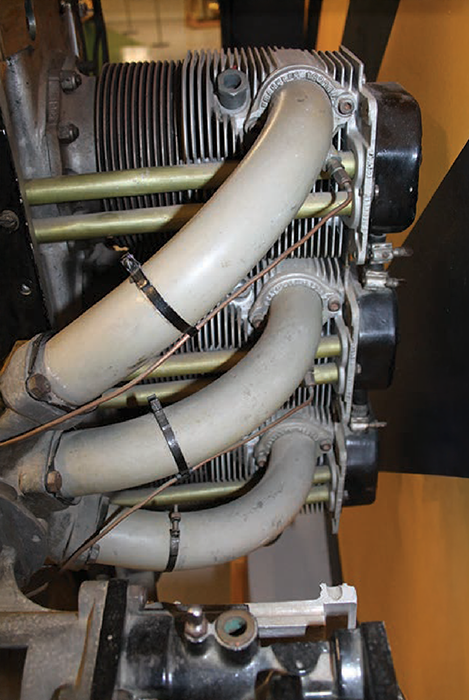
A subsequent exchange of e-mails with the museum curator, Susan Lindsay, revealed that they were still researching the engine themselves.
Susan revealed that ‘In the past, it has been suggested that it's a Franklin O-405-9, of the type used in the Sikorsky R6 (Hoverfly II). We're currently checking this and investigating the crankcase markings, and we’ll get back to you when we know more…’
This tied in with my own preliminary internet research, which revealed that the Sikorsky R-6 helicopter, nicknamed 'Hoverfly, was powered by an air-cooled 6-cylinder horizontally-opposed engine with the designation 6ACV-403 (0-405-9), from the American Franklin Engine Company, and was first run in 1942.
With a dry weight of 405 lb (184 kg) and displacing 6.6 litres from a combination of 117.5 mm bore and 101.6 mm stroke, this version was rated at 245 hp (183 kW) at 3275 rpm and was used to power the Sikorsky R-6A Hoverfly Il helicopter. A two-seat side-by side observation helicopter, it was a development of the previous radial-engined R-4B. The Franklin O-405-9 6-cylinder horizontally-opposed fin-cooled engine was mounted with the crankshaft vertical within the fuselage, aft of the cabin.
According to Jane's Fighting Aircraft of World War II, the R-6A Hoverfly II had a maximum speed of 100 mph, a service ceiling of 10,000 ft and an endurance of 5 hours, while other references quote a maximum speed of 96 mph, a ceiling of 13,200 ft and a range of 305 miles.
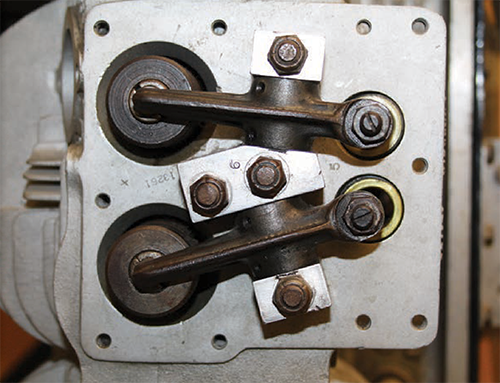
First flown in October 1943, the R-6A used the same rotor and transmission as its predecessor but the fuselage was completely redesigned to reduce air resistance and improve pilot visibility, compared with its boxy-looking predecessor. Although primarily an observation and liaison helicopter, many R-6As were equipped with capsules on either side to carry litters for medical evacuation. Alternatively, bomb racks could be fitted, or it could be equipped with floats for operation from water.
The first R-6s were delivered to the USAAF in late 1944 and some were transferred to the US Navy. It was initially intended to pass 150 R-6s to the RAF, but delays caused by the switch of production from Sikorsky's factory In Connecticut to Detroit, Michigan meant that only 27 R-6As were actually delivered to the RAF as the Hoverfly Il, 15 of which were passed on to the Royal Navy's Fleet Air Arm (FAA) for use in training and liaison roles.
Some of the RAF examples were allotted to 657 Squadron RAF for proving the use of helicopters in the Army Co-operation role, operating as Air Observation Posts, spotting for Army artillery units. The Hoverfly Il remained in operation until April 1951, and one squadron example was displayed at the Farnborough Air Show in September 1950. The USAAF operated their R-6s in secondary roles, with the survivors redesignated H-6A in 1948.

FOOTNOTE
We'll be interested to hear from any of our readers who have further definitive information or experience of the Franklin 0-405-9 engine, or the Sikorsky Hoverfly helicopter itself, and this will undoubtedly be equally gratefully received by the Army Flying Museum.
